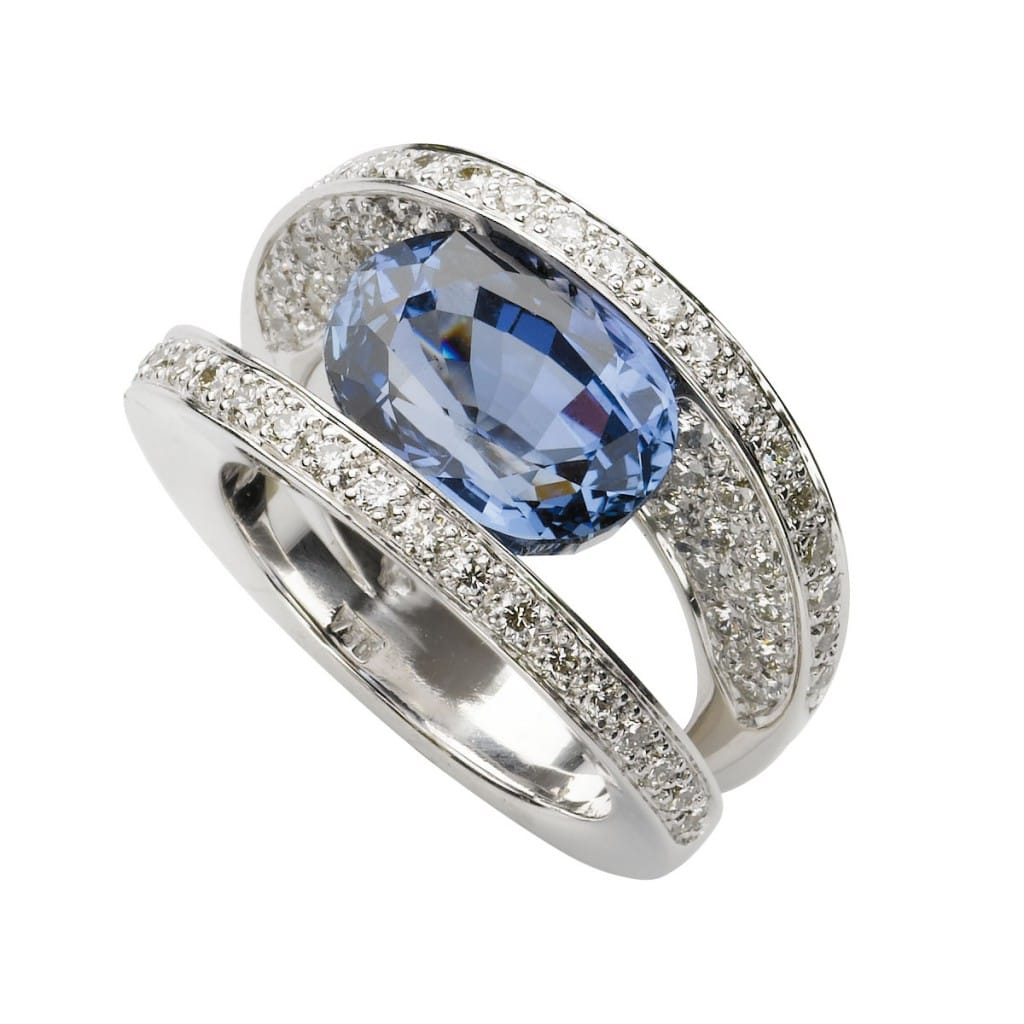They are exceptional stones in more than one respect. Firstly because of their colour, which evolves like a precious rainbow of nuances, from the softest to the most sparkling. Secondly because of their hardness, which is close to that of a diamond. And lastly, because of their rarity. All these reasons position sapphires firmly within the exclusive circle of precious stones, alongside diamonds, emeralds and rubies.
Like rubies, sapphires belong to the corundum family. While their colours may vary between pink and yellow, orange, green and black, the most commonly known sapphire variety is a shade of blue resulting from a powerful dose of iron and titanium. Burmese sapphires have always been considered the most beautiful due to their royal blue colour, but there are also deposits of exceptional sapphires in Madagascar, Tanzania, Thailand or Sri Lanka whence come the famous Padparadscha sapphires.
 Frieden necklace, Rainbow collection, set with natural-coloured sapphires from Madagascar.
Frieden necklace, Rainbow collection, set with natural-coloured sapphires from Madagascar.
Discover more Frieden jewels at Lionel Meylan here
Beautiful and famous
The history of gemmology is bursting with anecdotes on the subject of sapphires, amongst which is the surprising saga of the “Louis XIV”, a huge 135.72-carat rhomboid-shaped sapphire. Acquired by Louis XIV in 1669, it was the third most important gemstone in the jewels of the French Crown. Until very recently, this sapphire had been nicknamed “Ruspoli”, after a great aristocratic Italian family. This was a mistake and when the real “Ruspoli” sapphire – that had vanished for centuries – was finally found, the veritable royal origins of this magnificent gem were duly retraced.
The Star of India is another remarkable specimen that has made its mark on history. Until the discovery of the Black Star of Queensland, it was considered to be the world’s largest starred sapphire at 563.35 carats, or 112.67 grams. This sheer marvel discovered in Sri Lanka and housed at the New York Natural History Museum boasts a star on both sides, an unusual characteristic which has earned it an exceptional reputation as well as its name.
Boundless creativity
Because they come in a very rich range of hues, sapphires are a virtually inexhaustible source of inspiration for jewellers. They can be laid out in all kinds of subtly graded shades, particularly when arranged in snow settings. Due to their exceptional hardness, sapphires also lend themselves to all types of creations. Cut in an oval, cushion or pear shape, these sparkling wonders are mounted on rings, earrings, bracelets and pendants. Consistently colourful and infinitely precious…

More information about this ring here
A little glossary of sapphires from Florence Agier

Padparadscha Its salmon pink colour and rarity make the Padparadscha sapphire the most sought after in the world. Originally from Sri Lanka and highly prized by the Japanese, this variety boasts incredible shades of pink and orange.
Hardness The sapphire is a favourite precious stone amongst jewellery designers, notably due to its hardness. It in fact has a hardness rating of 9 on the Mohs scale. Invented in 1812 by German Friedrich Mohs in order to measure the hardness of minerals, this scale indicates that only one precious stone is harder than the sapphire – the diamond.
Rubies Red has a special place amongst the incredible variety of corundum colours. Formed in identical deposits, the ruby owes its colour to the presence of chromium oxide. The principal ruby deposits are in Burma, Sri Lanka and Thailand.
